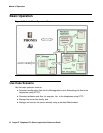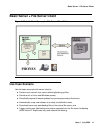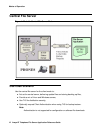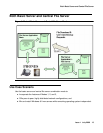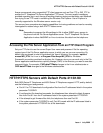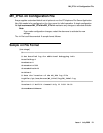
Issue 1 July 2006 15
Chapter 3: File Locations
Individual Server Descriptions
The basic central server architecture uses a standard Red Hat Linux or Windows server
installation.
The sections in this chapter define the default locations for files. Avaya recommends that you
use these default locations. Note also that the port numbers used are those used by default in
the IP Telephone download process. The port numbers can be reassigned as needed for testing
or another use.
The Avaya one-X™ Deskphone Edition for 9600 Series IP Telephones Administrator Guide
defines settings for the actual 9600 Series IP Telephone data files. The 4600 Series IP
Telephone LAN Administrator Guide defines settings for the actual 4600 Series IP Telephone
data files. The IP Telephone File Server Application servers replace all the equivalent servers
described in these administrator guides. By providing a multi threaded approach, the application
leverages that IP telephones can be programmed to search multiple servers/protocols on boot
up. This leverage can provide more resilience or define more granular file delivery to the
telephones.
TFTP Server with Default Port 69
The TFTP server function delivers configuration and firmware files to 4600 Series IP
Telephones. These settings and files are normally stored in the TFTPdata directory of the
application hierarchy by default:
For Linux: /opt/ecs/mvuser/MV_IPTel/data/TFTPdata
For Windows: c:/Program Files/Avaya/MV_IPTel/data/TFTPdata
Devices can access this directory with the TFTP protocol to retrieve the appropriate files.
Note:
Note: TFTP is exactly that – trivial and not robust. See Improving TFTP Reliability on
page 40 for options to improve download reliability by limiting connected clients
by number or IP address and to allow notional “timed sessions.”






